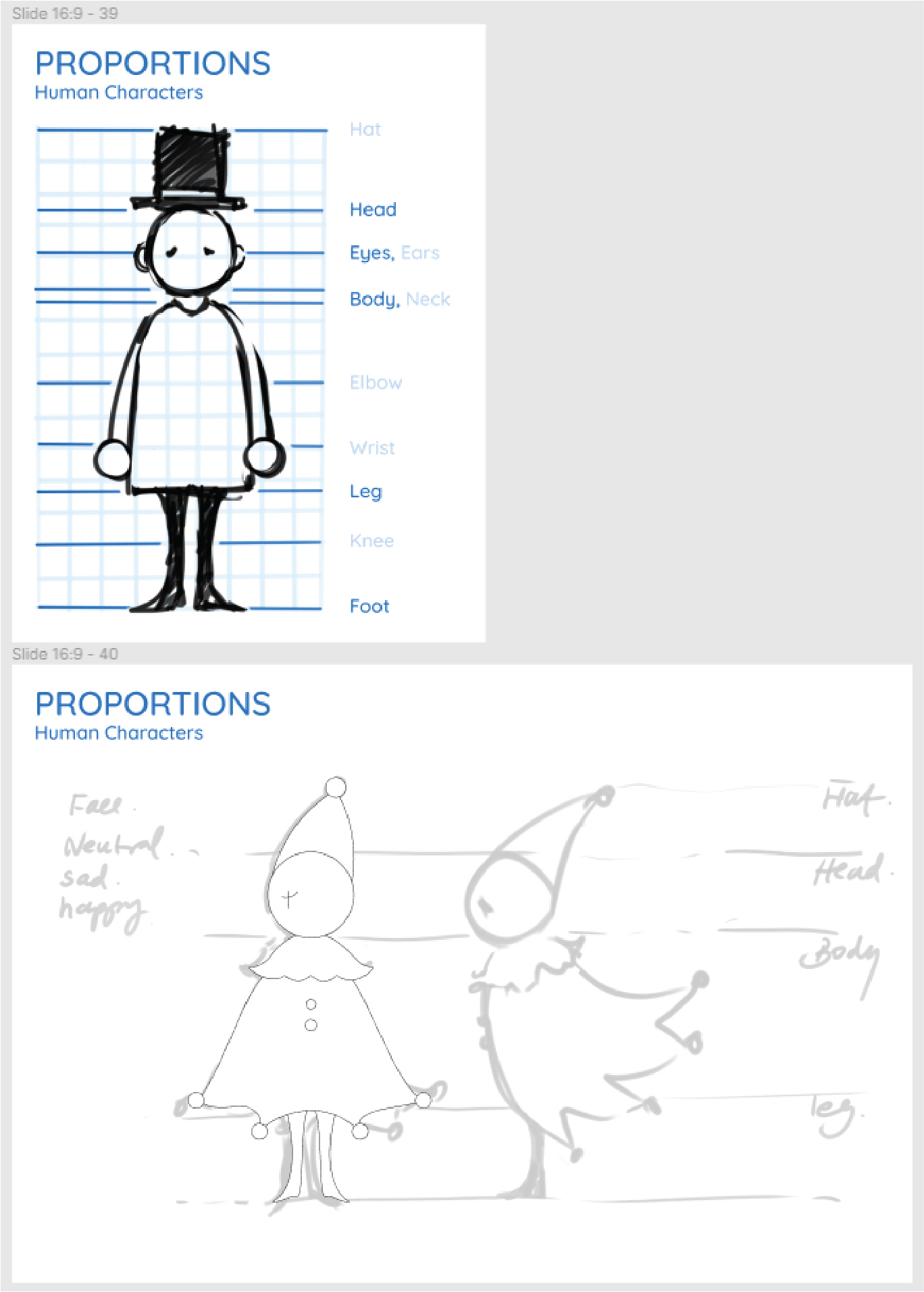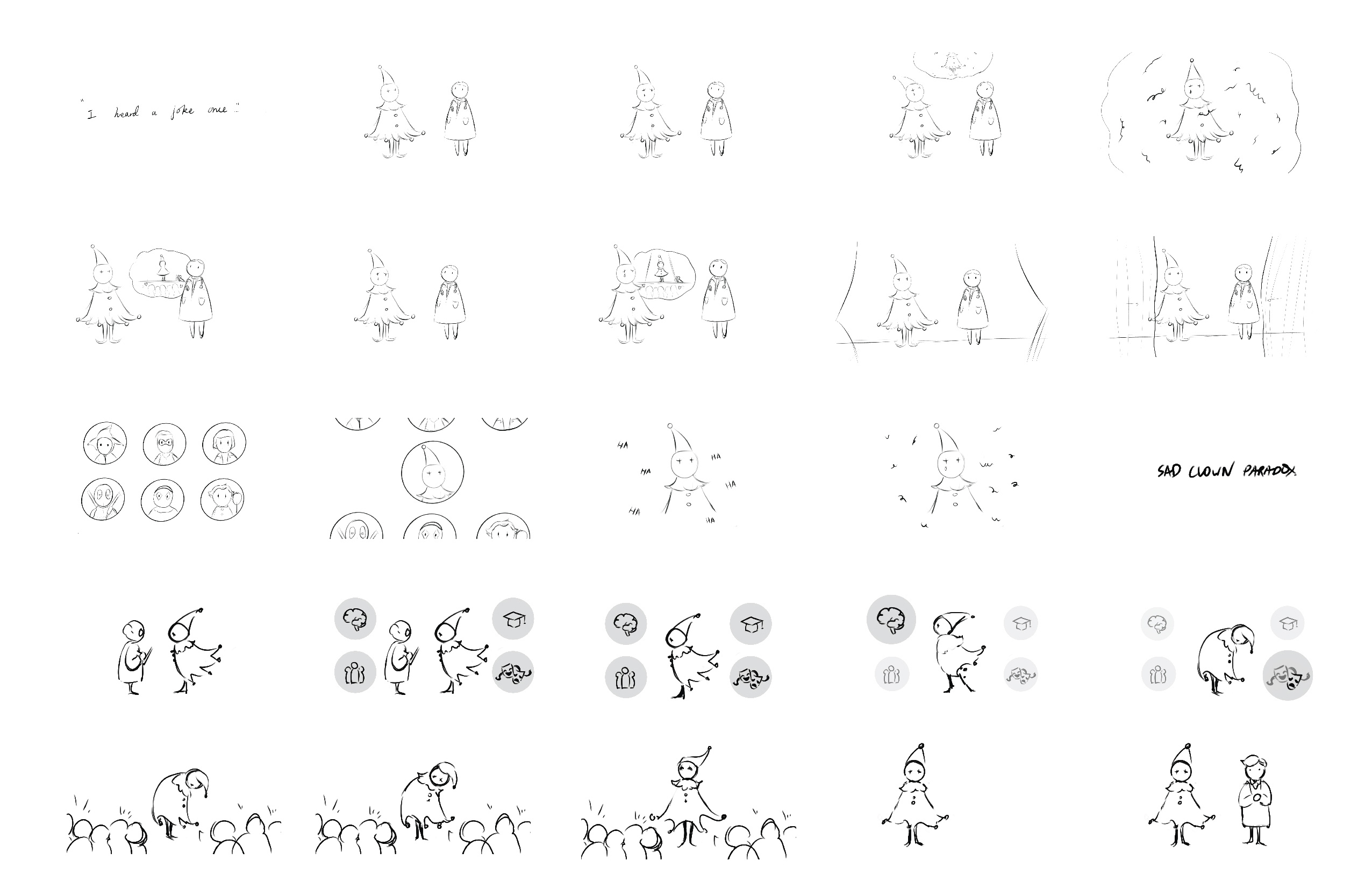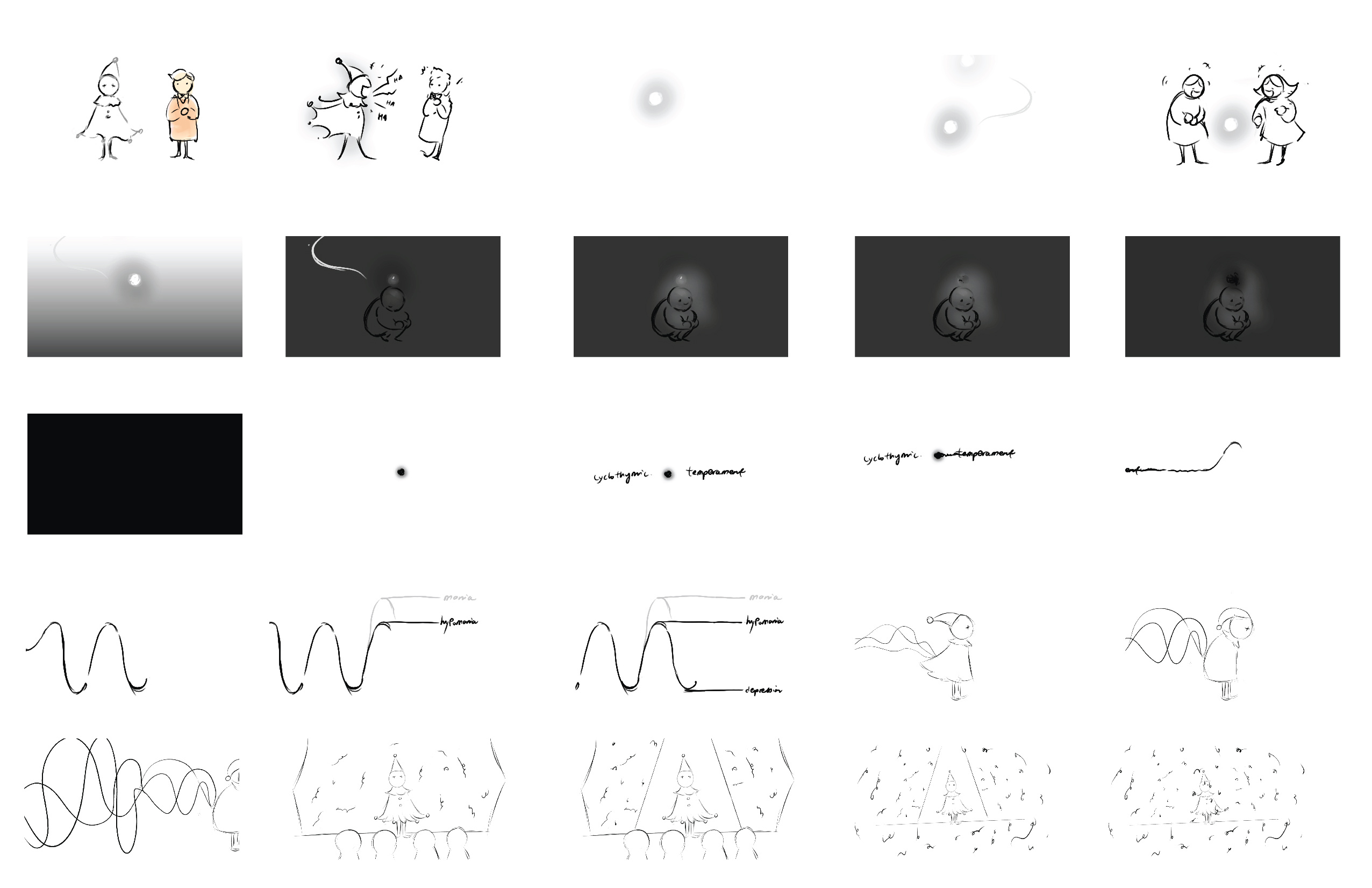
Client
Nicholas Woolridge
Year
2022
Media
Procreate, Adobe Illustrator, Adobe After Effects, Adobe Audition
Audience
General Lay Public
About
This 2D animation explores the contradictory relationship between humor and mental illness and its possible association with cyclothymic temperaments. This was a collaborative project made with Cassie Ren, Jenn Shao, and Amy Zhang.
Process
Research, Script, & Character Design
After learning about this disorder, we decided that we should gear the script to target a general audience in order to increase awareness. We opted for simple language and decided that the animation should follow a character that could give a glimpse into what it might be like to live with a cyclothymic temperament. Thus our main character, Pagliacci, was born (taken from the Italian opera of the same name).
Lorem, ipsum dolor sit amet consectetur adipisicing elit. Porro, ex!


Storyboards & Animatic
The story was split into two sections: One outlining the 'real world' where our main character Pagliacci goes to see a doctor, and another section which delves into more of the explanation behind his temperament. Throughout the story, Pagliacci is seen expressing his contradictory emotions and we tried to keep the science as simple as possible and accompanied with graphics to keep the audience engaged throughout.
Storyboards


Animatic
Color Design & Rigs
A very toned down color palette was used throughout to match the themes of the story. In the final, we also decided to give a stronger distinction between the 'real world' and explanatory sections by making the explanatory section in complete black and white film. There is also a distinction through the differences in shading given to each section. I was responsible for creating all the rigs and compiling the final animation. Rigs were created in After Effects using a combination of Joysticks & Sliders as well as Rubberhose.
Color Design


Rigs
References
- Perugi, G., Hantouche, E., Vannucchi, G. & Pinto, O. Cyclothymia reloaded: A reappraisal of the most misconceived affective disorder. J. Affect. Disord. 183, 119–133 (2015).
- Bielecki, J. E. & Gupta, V. Cyclothymic Disorder. in StatPearls (StatPearls Publishing, 2022).
- Humor as a protective factor against anxiety and depression | Elsevier Enhanced Reader. https://reader.elsevier.com/reader/sd/pii/S1697260019302509?token=6703E4936BC08B5D78F90F245C4823FD49707372FF09B89741513BF8FA4D68239C9AB2FA4B1BFA5A12964BC445AF2EC6&originRegion=us-east-1&originCreation=20220129164206 doi:10.1016/j.ijchp.2019.12.002.
- Corrigan, P. W., Powell, K. J., Fokuo, J. K. & Kosyluk, K. A. Does Humor Influence the Stigma of Mental Illnesses? J. Nerv. Ment. Dis. 202, 397–401 (2014).
- Gelkopf, M. The Use of Humor in Serious Mental Illness: A Review. Evid.-Based Complement. Altern. Med. ECAM 2011, 342837 (2011).
- Benazzi, F. Cyclothymic Temperament. Psychopathology 42, 165–169 (2009).
- Fava, G. A., Rafanelli, C., Tomba, E., Guidi, J. & Grandi, S. The sequential combination of cognitive behavioral treatment and well-being therapy in cyclothymic disorder. Psychother Psychosom 80, 136–143 (2011).
- Cyclothymia: Symptoms, Causes, Tests and Treatment. Cleveland Clinic https://my.clevelandclinic.org/health/diseases/17788-cyclothymia.
- Van Meter, A. R. & Youngstrom, E. A. Cyclothymic disorder in youth: why is it overlooked, what do we know and where is the field headed? Neuropsychiatry (London) 2, 509–519 (2012).
- Malavasi, E. L. V. et al. DISC1 regulates N-methyl-D-aspartate receptor dynamics: abnormalities induced by a Disc1 mutation modelling a translocation linked to major mental illness. Transl Psychiatry 8, 184 (2018).
- Kaufman, S.B., & Kozbelt, A. The Tears of a Clown: Understanding Comedy Writers.To appear in S.B. Kaufman & J.C. Kaufman (Eds.), The Psychology of Creative Writing. (2009)